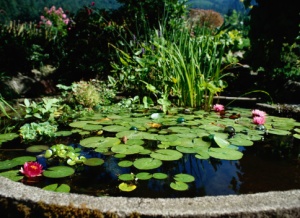Feeding Your Fish in Hot Weather

Summer is the one of the most enjoyable times of the year to sit by the
pond and relax. During extreme or extended periods of hot weather,
however, it’s necessary to watch for potential problems caused by high
water temperatures.
First, provide food that is quick and easy to digest. Your fish will be
very active in warm temperatures and should be fed at least once, and up
to two or three times, per day, depending on conditions. It is best to
feed your fish in the morning–the coolest time of day. To ensure
they’ve consumed all of their food, offer small amounts at each feeding.
This will prevent uneaten food from decomposing at high temperatures
and polluting your pond water. If it is extremely hot, and your fish
seem sluggish and not interested in eating, wait for cooler temperatures
later in the day or the following morning.
In addition, the solubility of oxygen depends on the temperature. In the
winter, oxygen readily dissolves in cold water. In the summer, as water
temperatures rise, oxygen becomes increasingly insoluble. When fish
feed in extreme summer heat, their movement uses more oxygen, which is a
problem if there isn’t a sufficient oxygen supply in the water.
Take steps to increase water movement, such as ensuring there is good
water circulation. Disrupt your pond’s surface to aerate water and
increase the area where oxygen and carbon dioxide can be exchanged.
Consider adding a fountain, a bubbler or a waterfall, in addition to
oxygenating plants.
The golden rule? As the water temperature rises above 77°F, fish will
consume less food in a given feeding. Feed only as much as fish will
consume within five minutes. They will eat what they need to survive,
dependent on various conditions.


